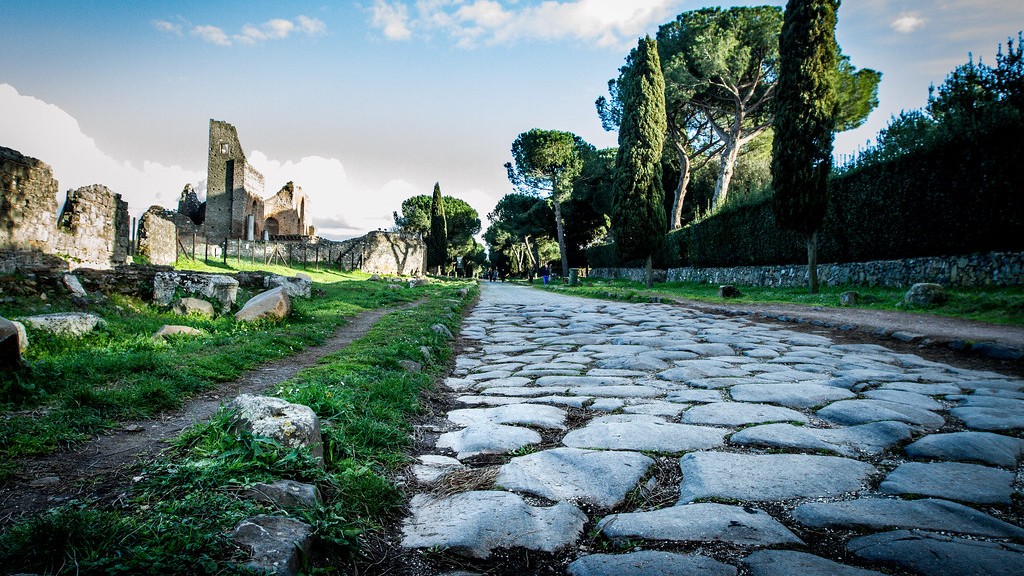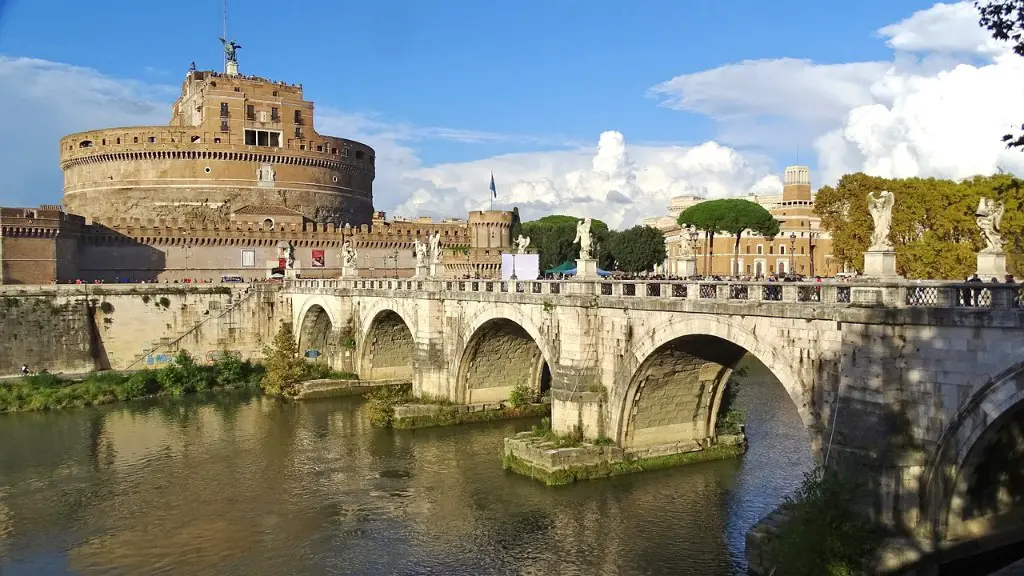There is no easy answer to the question of whether life in ancient Rome was good. The Roman Empire was one of the largest empires in world history, and it achievement a great deal in terms of political stability, military power, engineering, and architecture. At the same time, life in ancient Rome was very different from life in modern western societies. The Roman Empire was an extremely hierarchical society, and the vast majority of people were poor and had few rights. Slavery was commonplace, and women had very little power or independence. So, while life in ancient Rome had some positive aspects, it was also very different from life in contemporary western societies.
The answer to this question is complex. On one hand, ancient Rome was a time of great political, economic, and military power. On the other hand, life for the average person was difficult, with little social mobility and a great deal of political instability.
What was life like for the average Roman?
The average citizen in the Roman Empire worked hard and lived in modest housing. Despite the riches of the empire, the largest class lived in what can only be described as poverty. Roman children wore pendants called bullas, from the Latin word for “bubble,” around their necks.
The ancient Romans were some of the most innovative people in terms of technology and science. They were able to develop aqueducts and other ways to improve water flow, which ultimately shaped the way the world does things. The Romans were also extremely adept engineers, and they understood the laws of physics well enough to develop new and improved ways to help water flow.
How hard was life in Rome
Most Romans were poor and performed unskilled labor for work. In contrast to the opulent homes on Palatine Hill, the working poor of Rome crowded into the ancient equivalent of apartment buildings. Their neighborhoods were noisy and dirty.
Country life in ancient Rome was a far cry from the simple life of farmers today. Rich citizens escaped to their country estates to oversee their farms, but mostly to enjoy some rest from the social duties of the city. In the country, they enjoyed hunting, riding, fishing, and of course, the baths, dinner, and a busy social life between the villas.
How did the Romans treat the poor?
The disabled population of Rome was among the poorest of the poor. They often had to sell themselves or their children into slavery in order to survive. According to Ammianus Marcellinus, a Roman historian, the Roman poor lived in buildings’ crevices, tabernae, or vaults beneath theaters or circuses.
A typical Roman day would start off with a light breakfast and then off to work. Work would end in the early afternoon when many Romans would take a quick trip to the baths to bathe and socialize. At around 3pm they would have dinner which was as much of a social event as a meal.
What made Rome fall?
The most straightforward theory for Western Rome’s collapse pins the fall on a string of military losses against outside forces. Rome had tangled with Germanic tribes for centuries, but by the 300s “barbarian” groups like the Goths had encroached beyond the Empire’s borders. In 410, the Visigoths sacked Rome itself. Three years later, the Vandals took North Africa, Rome’s breadbasket. The Western Roman Empire crumbled soon after.
In ancient Rome, the lives of rich and poor people were very different. The poor lived in the dirtiest, noisiest, most crowded parts of the city. Their houses were poorly constructed. These four- and five-story apartment buildings usually lacked heat, water, and kitchens. The rich, on the other hand, lived in single-family homes with spacious gardens. They had slaves to take care of their every need. It’s no wonder that the rich and poor rarely interacted.
What good things did Rome do
The Romans were a highly advanced society that left a lasting impression on the world. Here are 13 things that they did for us:
1. Fast food – The Romans were the first to introduce street stalls and ‘food on the move’ as we might think of it today.
2. Advertising and trademarks – The Roman Empire was the first to use advertising and trademarking to protect their businesses.
3. Plumbing and sanitation – The Romans were highly advanced in their plumbing and sanitation systems, which were a great improvement over previous civilizations.
4. Towns – The Romans were the first to develop towns and cities as we know them today.
5. Architecture – The Romans were responsible for some of the most impressive architecture in history, including the Colosseum and the Pantheon.
6. Roads – The Roman road system was the most advanced of its time and helped to facilitate trade and transportation throughout the empire.
7. Our calendar – The Roman calendar was the first to use the lunar cycle to calculate days and months, which is the basis of the calendar we use today.
8. Glass – The Romans were the first to develop a method for creating glass, which has become a staple material in
Roman culture was incredibly violent, and images of war and violence were everywhere in the Roman world. Myths and history are filled with acts of rape, fratricide and war. This violence was a significant part of Roman identity.
What time did Romans wake up?
The ancient Romans were known for their love of leisure and their impressive dinner parties. They would wake up before dawn and finish work by noon, so they had plenty of time to enjoy their afternoon activities. These activities included swimming, exercising, and other relaxing pursuits. At sundown, they would come together for elaborate dinner parties that often went on until late in the evening.
The life expectancy in the Roman Empire was about 25 years, but the people in the study had a life expectancy of around 51 years. This shows that they were much healthier than the average person in their time.
How did rich Romans live
Wealthier Romans lived in a domus, which was a house built around an unroofed courtyard, or atrium. The atrium acted as the reception and living area, while the house around it contained the kitchen, lavatory, bedrooms (cubuculi) and dining room, or triclinium.
In ancient Rome, both boys and girls were educated, though not necessarily together. In a system much like the one that predominates in the modern world, the Roman education system that developed arranged schools in tiers. The first tier was the elemental school, where children learned the basics of reading, writing, and arithmetic. The second tier was the secondary school, where they learned grammar, rhetoric, and other more advanced subjects. The third tier was the tertiary school, where they studied philosophy, mathematics, and other even more advanced subjects.
Did Rome have homelessness?
Rome 2,000 years ago had no facilities for the disturbed, and no remedy besides offering sacrifices at temples to Jupiter, Juno, or gods from the Middle East like Isis and Cybele. Whatever the reasons, the homeless were ubiquitous and many among the affluent saw them as iniquitous.
Some people believe that Jesus was arrested on a charge of treason and was crucified as a result. Others believe that he was simply a troublemaker who got what he deserved. However, the Christians believe that Jesus was a martyr and that his execution only made the situation in Judaea more unstable.
Final Words
There is no single answer to this question as life in ancient Rome varied greatly depending on one’s social class. The upper class often enjoyed luxury and comfort, while the lower class may have struggled to get by. However, overall, life in ancient Rome was filled with opportunities and challenges, and many people enjoyed fulfilling and exciting lives.
Although there is no definitive answer to this question, ancient Rome was a complex and varied society, and life for its citizens could be both good and bad. Wealthy citizens enjoyed a life of luxury, while the poor often struggled to make ends meet. Slavery was an integral part of Roman society, and slaves were often treated harshly. Women also had a lower social status than men, and could not participate in many aspects of public life. Overall, ancient Rome was a complex and often contradictory society, and how good or bad life was depended on a person’s individual circumstances.





